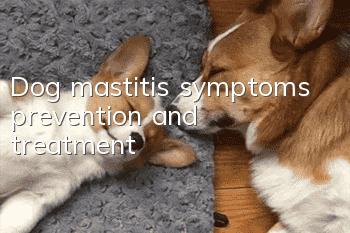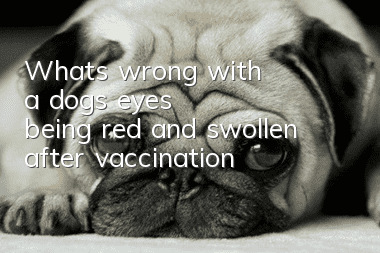Dog mastitis symptoms, prevention and treatment

Every dog will experience various problems as they grow up, all of which require timely discovery and correct response. For female dogs, mastitis is one of the most important diseases that harms dogs. What are the symptoms of mastitis in dogs? How to prevent and treat it?
Rhodesian Ridgeback
1. Causes and symptoms of canine mastitis
Canine mastitis is also called mastitis. This disease not only harms the physical and mental health of the female dog, but is also harmful to the lactating puppies. This is an acute or chronic inflammation of one or more breast glands that can occur at the same time. This disease often occurs in nursing female dogs. So what are the causes and symptoms of canine mastitis?
1. Cause
Acute mastitis is mainly seen when the mammary gland is damaged or traumatized when the puppies are suckling. It is also seen when the lactation is suddenly weaned or when all the puppies die and the milk accumulates. This disease can also be secondary to metastatic infection from acute metritis. The main pathogenic bacteria of infection are Streptococcus and Staphylococcus. Chronic mastitis is more common in older dogs and may be related to hormonal imbalance.
2. Symptoms
In the early stage of mastitis, the affected mammary glands will have varying degrees of congestion and redness, the breasts will become swollen and hard, feel warm to the touch, the lymph nodes on the breasts will swell, and lactation will decrease or stop. As the infection progresses, systemic symptoms may appear, including increased body temperature, depression, loss of appetite, dehydration, etc. Mastitis may develop into a breast abscess. The center of the swollen part begins to soften and has a fluctuating feeling, and sometimes spontaneous ulceration and pus discharge occur. Chronic pus adenitis is characterized by the formation of cysts and sometimes tumors in the breast tissue.
2. Prevention and treatment methods of canine mastitis
Canine mastitis is an inflammation of the breast caused by poor milk drainage, resulting in milk accumulation. Mastitis not only brings pain to the female dog, but also has a certain impact on the puppies. So what should you do when you encounter this kind of problem? What is the best way to treat it?
1. Treatment
In case of acute mastitis, antibiotics should be treated as soon as possible, and the whole litter of nursing puppies should be weaned and artificially raised. The affected breasts are massaged and expressed several times a day. After expression, aqueous antibiotics are injected into the breast pool through the nipple duct, 2 to 3 times a day. Antibiotics should be broad-spectrum, such as penicillin, streptomycin, and ampicillin. Furans and sulfa drugs can also be used. For those with breast abscess, the pus can be drained by incision at the softest part and flushed with penicillin and saline. Circular sealing with 0.2% procaine hydrochloride solution around the breast has a good effect. For breasts with severe milk stasis, in addition to milk expression, hot compress and then cold compress can be used twice a day. Have systemic symptomsFor dogs, infusion therapy should be used, and calcium and vitamin C should be supplemented. For those who develop breast tumors, mastectomy can be performed.
2. Prevention:
(1) Keep your mind clean.
(2) Shave the hair around the breasts and pay attention to the cleaning of the breasts.
(3) Trim the puppies’ toenails to avoid scratching the mother dog’s mammary glands when drinking milk.
- When is the best time for a female dog to be neutered?
- Eliminate bad habits in dogs
- How long does it take for a puppy to recover from a drug overdose?
- Can a dog's broken tail heal on its own?
- How should the Husky be punished when he makes a mistake?
- How long does it take for a Samoyed to mate?
- How to train a dog to fetch a ball
- What is the reason for yellow hair on Pomeranian white hair?
- When is the best time to feed golden retrievers?
- How to train a Shiba Inu not to bite



